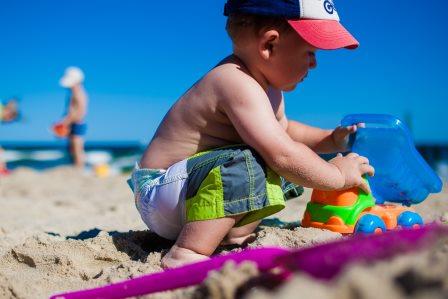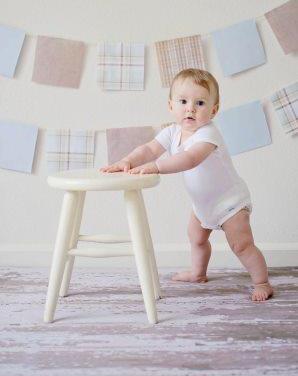NICOLA HAMILTON AND ALANA RANDALL
Nicola Hamilton and Alana Randall are Paediatric Physiotherapists, The Royal Children’s Hospital, Melbourne
Every child requires the opportunity to grow and achieve their developmental milestones. This includes children with haemophilia. Some new parents may not be familiar with what ‘normal’ looks like, and have some worries about how to appropriately and safely allow opportunities for play and development.
Development is a term used to describe the path that children take as they grow and change from the time they are born, and continues into adolescence and early adulthood.

The early years are a key time for development. In the first five years of life, your child’s brain develops more and faster than at any other time in their life.
Children’s developmental progress may be organised into the following domains:
All of these developmental areas are linked, and each depends on and influences the others.
Development does not progress at the same rate in all children – there is a broad variation in ‘typical’ ages of achieving milestones or new skills. Most children however, follow a similar pattern or sequence of development.
Developmental milestones are used to monitor infants and children’s progress with their development. Health professionals, such as your GP and maternal child health nurse, will review your child’s developmental milestones when you attend for check-ups.
If you have concerns regarding your child’s development be sure to discuss this with your health care professional, including your Haemophilia Care Team.
In the early years, your child’s main way of learning and developing is through play.
You can help to facilitate your child’s development by the variety of positions you put them in, the way you engage and talk to them and the toys you give them to play with.
When they are a baby it is beneficial to place them in different positions, including on a mat and on their tummy. Tummy time should always be when babies are awake and alert and never when they are asleep as per the SIDS (Sudden Infant Death Syndrome) guidelines. Experiencing a variety of positions will help them develop their movement skills.
As a parent of a child with haemophilia, it is normal to feel anxious when handling your child as a baby or to be concerned as they become more mobile.
It is important for your child’s holistic development to provide them opportunities to move around and explore their world freely, as any other child would.
Letting your child to move freely and experience falls safely also helps to develop their balance and movement and coordination skills which will assist with joint protection as they grow.
The great thing about babies and children is that they are very robust. Did you know that toddlers will fall over 300 times whilst learning to walk!

The following are some practical changes that you may find helpful, but be aware they will not prevent all bruises or bleeds:
If you have concerns regarding your child’s development you can discuss these with your general practitioner (GP), Maternal and Child Health Nurse and of course your Haemophilia Care Team.
For additional resources on child development see:
Haemophilia Foundation Australia acknowledges the Traditional Owners and Custodians of Country throughout Australia, the land, waters and community where we walk, live, meet and work. We pay our respects to Elders past and present and extend that respect to all Aboriginal and Torres Strait Islander peoples.
Sign up for the latest news, events and our free National Haemophilia magazine